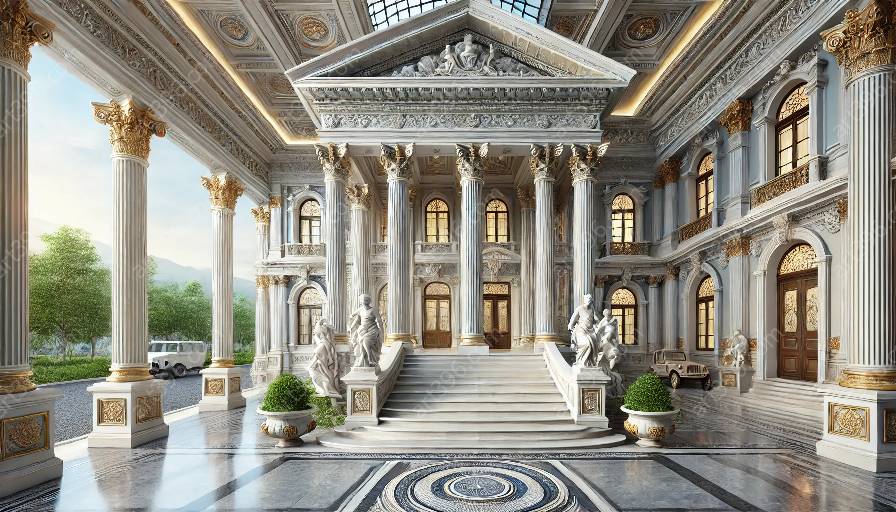Brutalist architecture, often characterized by its raw, exposed concrete surfaces and imposing forms, has sparked both admiration and debate since its emergence in the mid-20th century. As a design movement, brutalism prioritizes functionality and usability, focusing on practicality and efficiency in addition to its distinct aesthetic. This approach has led to a unique intersection of form and function within the brutalist architectural style.
Understanding Brutalist Architecture
To comprehend the role of functionality and usability in brutalist architectural design, it's essential to first understand the fundamental principles of brutalism. Brutalist architecture emerged in the post-war era, primarily as a response to the need for cost-effective, durable, and versatile building materials. The style often features imposing, monolithic structures with a focus on exposed concrete and raw construction materials.
Brutalism emphasizes geometric shapes, modular elements, and a no-frills approach to design. This minimalist aesthetic is closely tied to the movement's commitment to functionality and practicality, as the design prioritizes the essential purpose of a building or structure. As such, brutalist architecture brings an emphasis on the usability of space and the efficient arrangement of elements to the forefront of its design philosophy.
Functionality in Brutalist Architecture
The functionality of brutalist architecture is evident in its emphasis on efficient use of space and materials. The movement often prioritizes clear circulation paths and functional layouts, promoting a sense of order and accessibility within its structures. Moreover, the use of exposed concrete not only serves an aesthetic purpose but also reflects the movement's commitment to practical, low-maintenance construction materials.
Brutalist buildings are designed with a focus on serving their intended functions effectively. This can be seen in the careful consideration of form and structure, which often align with the specific needs of the building's occupants. Whether it's a residential complex or a cultural institution, brutalist architecture strives to create spaces that cater to the practical requirements of its users while maintaining a distinct and identifiable architectural language.
Usability in Brutalist Architecture
Usability is a crucial aspect of brutalist architecture, as the movement seeks to create spaces that are not only functional but also user-friendly. This emphasis on usability is expressed through the careful consideration of human-scale design, natural lighting, and the integration of public spaces. Brutalist buildings often feature open, unobstructed areas that are accessible and inviting to inhabitants, fostering a sense of community and interaction.
Furthermore, the usability of brutalist architecture extends to its adaptability and longevity. The movement's focus on durable, low-maintenance materials and construction techniques contributes to the longevity of its structures, ensuring that they remain functional and relevant for generations to come. This commitment to usability aligns with the broader sustainability goals of the architectural industry, reflecting the enduring value of brutalist design in meeting the needs of both present and future users.
Compatibility with the Broader Field of Architecture
While brutalist architecture has its own distinct characteristics, its emphasis on functionality and usability aligns with broader architectural principles. The movement's focus on practicality, efficiency, and user-centered design resonates with the fundamental considerations of architecture as a whole. As a result, the principles of functionality and usability in brutalist architectural design can be seen as compatible with, and even influential to, the broader field of architecture.
From modernist to contemporary architectural practices, the lessons from brutalism's approach to functionality and usability continue to inform and inspire designers and architects worldwide. The movement's unapologetic prioritization of practical considerations has underscored the enduring importance of creating spaces that are not only visually striking but also purposeful and user-centric.
Conclusion
In conclusion, the emphasis on functionality and usability in brutalist architectural design represents a critical aspect of the movement's enduring relevance and impact. By prioritizing practicality, efficiency, and user-friendly design, brutalist architecture has left a lasting impression on the broader architectural landscape. Its distinct approach to form and function continues to inspire architects and designers, offering valuable lessons that resonate across different architectural styles and periods.
Returning to the core principles of brutalism, it becomes apparent that its commitment to functionality and usability transcends mere aesthetics, embodying a timeless ethos that remains relevant and influential in shaping the built environment.





























































